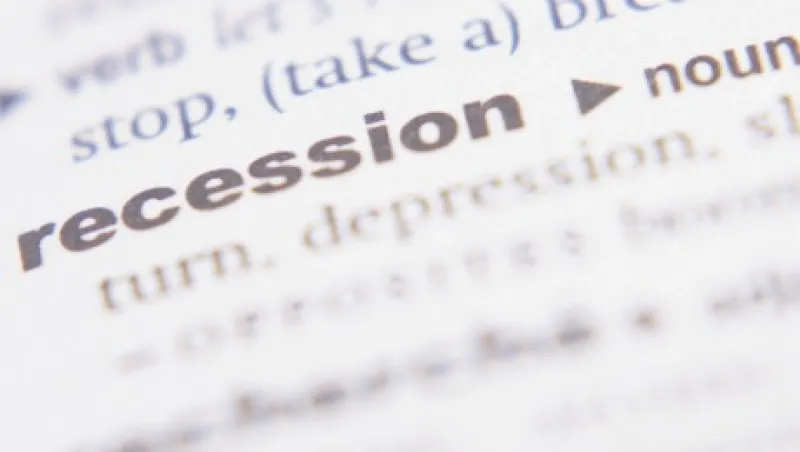Since World War II, the U.S. economy has averaged a recession every five years. So with the economy now almost six and a half years into a recovery, are we due for another downturn? No, economists say.
“The expression used to be that expansions don’t die of old age,” and that characteristic probably hasn’t changed, says Jeffrey Frankel, a professor of capital formation and growth at Harvard University’s Kennedy School of Government and a member of the National Bureau of Economic Research’s business cycle dating committee, which officially determines when recessions begin and end.
Statistical research shows that the probability of recession is roughly equal in each year of an expansion, Frankel says. The average lifespan of recoveries since 1982 is eight years. Joseph Gagnon, a senior fellow at the Peterson Institute for International Economics, sees the chances for a recession now as “normal: 20 to 25 percent.”
The catalysts for a downturn aren’t in place, economists agree. “Are we in a pattern of overheating, inflation, asset market bubbles — patterns that set the stage for recessions?” Frankel asks. “I think one has to say no.”
The six-year recovery has produced average annual growth of 2.1 percent, far below the 3 percent average of the past 55 years, so overheating obviously isn’t an issue. The personal consumption expenditures price index, the Federal Reserve’s favored inflation gauge, advanced only 0.2 percent in the 12 months through September, nowhere close to the Fed’s target of 2 percent.
As for asset markets, some analysts have expressed concern that stocks and bonds are overvalued. After tripling over the past six and a half years, the Standard & Poor’s 500 index traded at 16.1 times forward earnings on November 13, up from the ten-year average of 14.1. On the fixed-income side, the ten-year Treasury yield stands fewer than 100 basis points above its 2012 record low.
“Stocks and bonds are a little on the high side, but not a bubble,” Frankel says. A stock market crash like that of 2008–’09 is unlikely, he maintains. “That’s partly because it’s too fresh in everyone’s minds. Households and institutions aren’t as vulnerable.”
Given the low level of interest rates, high stock prices make sense, Gagnon says. “I don’t see the low interest rate/high stock price nexus as that bad.” And he notes that the elevated price-earnings ratio for the S&P 500 is still well below its 1999 peak of 25.
At any point, a random event, such as a war in the Middle East that pushes oil prices higher, could cause a recession, but that can happen at any time, Columbia University economist and professor of banking and financial institutions Frederic Mishkin, a former Fed governor, points out. “Shocks happen all the time, but they aren’t related to the fact that the economy has been in an expansion for so long.”
The way economists think of recession is that the economy travels along a growth path, and something happens to push it out of whack, Gagnon says. “There is no time dimension to that,” he says. “Recessions have happened after one year, and recessions have happened after ten.” A recession followed a one-year recovery in 1980–’81, and the ten-year recovery that started in 1991 ended in recession in 2001.
But there is one element of time dependency, Gagnon says. “It’s very rare for recessions to occur early in a recovery. There are dynamics to an early stage of recovery that are hard to stop.” Those dynamics usually consist of accommodative fiscal and monetary policy. “People are fixing the problems, and the plucked string wants to come back,” Gagnon says.
So what could cause a recession now? The biggest risk to the U.S. is sagging economies overseas, economists say. Japan’s economy shrank an annualized 0.8 percent in the third quarter, the euro zone’s economy expanded just 1.2 percent, and China’s economy grew 6.9 percent, putting it on track for the slowest full-year growth in 25 years.
But it would have to be a big shock from abroad to throw the U.S. into recession, given the American economy’s low reliance on trade, Gagnon says. Exports account for about 14 percent of U.S. gross domestic product.
The big danger is that emerging markets fall into a tailspin because of China’s weakness or rising U.S. interest rates, Frankel says. “Commodity producers already are in serious trouble and vulnerable to further downside.” But emerging-markets pain would be no more likely to spread than the Asian currency crisis of 1997–’98, he says, noting that this period was part of the longest and strongest expansion in U.S. history.
As for the timing issue, “Thinking about how long the recovery has been going to [determine] when a recession is coming isn’t the best approach,” Columbia’s Mishkin says.







